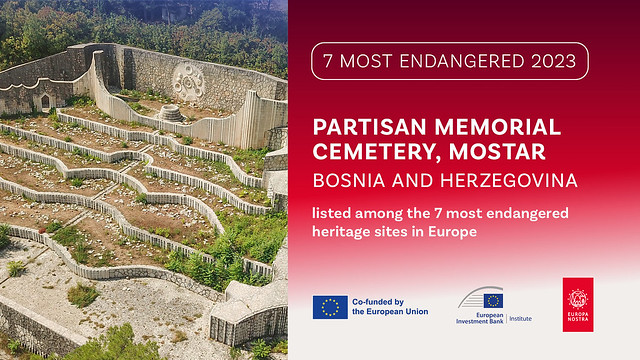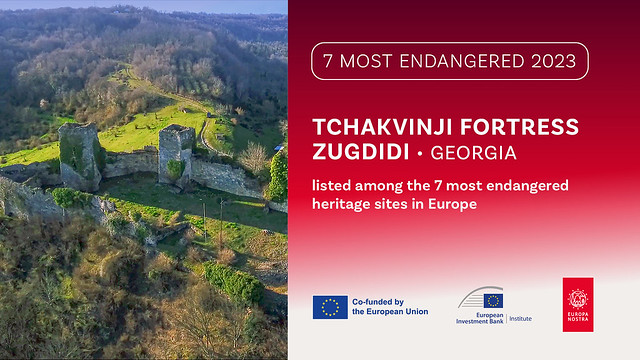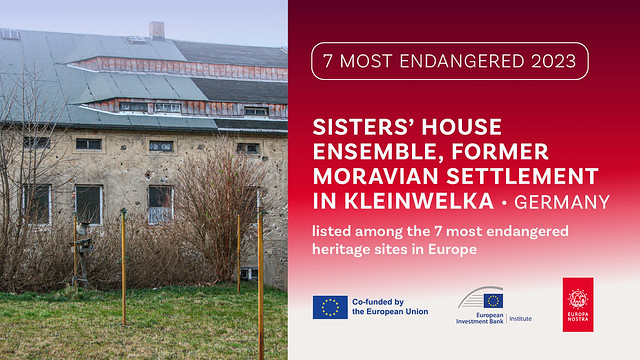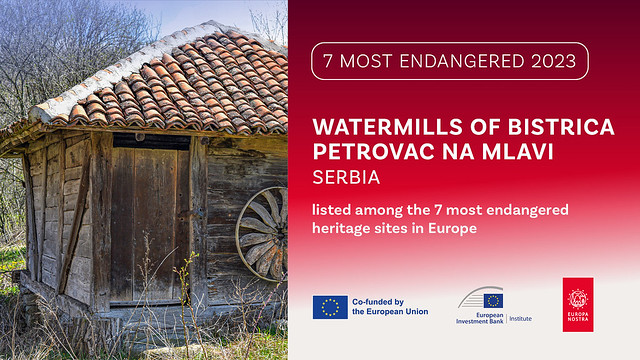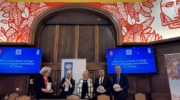Europe’s 7 Most Endangered Heritage Sites 2023 announced
The list of the 7 Most Endangered monuments and heritage sites in Europe for 2023 – which marks the 10th anniversary of this innovative programme – has been announced today by Europa Nostra, the European Voice of Civil Society Committed to Cultural and Natural Heritage, and the European Investment Bank (EIB) Institute.
The 7 Most Endangered sites for 2023 are:
Kortrijk Railway Station, Kortrijk, BELGIUM
Partisan Memorial Cemetery, Mostar, BOSNIA AND HERZEGOVINA
Tchakvinji Fortress, Zugdidi, GEORGIA
Sisters’ House Ensemble, former Moravian settlement in Kleinwelka, GERMANY
Memento Park, Budapest, HUNGARY
Cultural Landscape of Sveti Stefan, Paštrovići, MONTENEGRO and
Watermills of Bistrica, Petrovac na Mlavi, SERBIA.
More information about each site can be found below.
The announcement was made at an online event featuring nominators and representatives of the selected sites, which attracted participants from across Europe and beyond.
The Executive Vice-President of Europa Nostra, Guy Clausse, stated: “By putting these heritage sites on the 2023 list of 7 Most Endangered, we wish to convey a message of hope, solidarity and support to the local communities and activists who are resolutely determined to save them. Together with our partners (European and local), we will provide technical expertise, identify possible sources of funding and mobilise our wide network to support their cause and their efforts, which have now become also our cause and our shared responsibility. Let us use Europe’s cultural heritage as a vector for peace, social cohesion and sustainable development.”
The Head of Programme for Climate and Heritage at the European Investment Bank Institute, Bruno Rossignol, added: “Cultural heritage is a key resource for shaping our European identity, without which economic growth is meaningless. This cohesive power is recognised by the EIB which takes heritage preservation into account when reviewing new investment projects or when lending for urban renewal projects, often with a heritage component. On the 10th anniversary of the programme, the sites selected today will once more testify to the cohesive power of cultural heritage and link with the Bank’s mission and activities.”
The Board of Europa Nostra selected the finalists from among the 11 monuments and heritage sites from eight countries previously shortlisted by the Advisory Panel of the 7 Most Endangered programme. The nominations were put forward by member organisations, associate organisations or individual members of Europa Nostra, as well as by members of the European Heritage Alliance.
The selection was made on the basis of the outstanding heritage significance and cultural value of each of the sites, as well as the serious danger that they are facing today. The level of engagement of local communities and the commitment of public and private stakeholders to saving these sites were considered crucial added values. Another selection criterion was the potential of these sites to act as a catalyst for sustainable socio-economic development as well as a tool for promoting peace and dialogue within their localities and wider regions.
The 7 selected sites are eligible for an EIB Heritage Grant of €10,000 per site to assist in implementing an agreed activity that will contribute to saving the threatened sites.
Teams of experts representing Europa Nostra and the European Investment Bank Institute, together with the organisations that nominated the 7 selected sites and other partners, will now gather information and meet with key stakeholders to assess the sites and issue a technical and financial report with recommendations for action.
From Belgium to Serbia, preserving Europe’s cultural memory and identity

Both tangible and intangible heritage across Europe is eligible for the 7 Most Endangered programme, regardless of whether it is publicly or privately owned. Being on the list serves as a catalyst for action and as an incentive for mobilisation of the necessary public or private support. Ultimately, the programme helps raise awareness; it also embraces and fosters the sense of European identity and the feeling of belonging to a wider European community.
Kortrijk Railway Station, Kortrijk, BELGIUM
Built in 1839, following the European trend of Neoclassicism, the first railway station in Kortrijk was heavily bombed in 1944. The rebuilding of the station followed the Expo 58 style, a “discussion” between neoclassical and contemporary elements. It is now threatened to be demolished to make space for the development of a new station. The local community advocates against the demolition and for the sustainable development of this architectural landmark.
Partisan Memorial Cemetery, Mostar, BOSNIA AND HERZEGOVINA
The Partisan Memorial Cemetery is one of the largest anti-fascist monuments in the Balkans. Built in 1965 in the town of Mostar, it features some 700 tombstones as grave markers of freedom fighters from the Yugoslav Partisan movement. This memorial site has become one of the region’s contested heritage sites. This has resulted in repeated acts of vandalism up until June of 2022, which received widespread condemnation. This significant memorial site urgently needs a holistic plan for its conservation and maintenance with a corresponding funding.
Tchakvinji Fortress, Zugdidi, GEORGIA
Located in the city of Zugdidi, the Tchakvinji Fortress was constructed between the 2nd and 5th centuries BC and remained in use until the 18th century. Abandoned for over two centuries, the fortress has suffered from deterioration and has been exposed to severe weather conditions. The necessary rescue of this Monument of National Significance would also act as a catalyst for sustainable socioeconomic development of the region.
Sisters’ House Ensemble, former Moravian settlement in Kleinwelka, GERMANY
Built in the mid-18th century, the Sisters’ House Ensemble is located in Kleinwelka, a former Moravian settlement in Saxony. The Moravian settlement began to decline by the 20th century. Tenants started moving out due to low housing standards. Since then, the abandoned buildings have fallen into decay. Once restored, this ensemble could tell the local history and provide a heritage space for a variety of social activities of local, regional and cross-border importance.
Memento Park, Budapest, HUNGARY
Opened in 1993, Memento Park is a history museum, an educational centre and an artistic action ground. It is the resting place of statues which used to symbolise communist ideology in the streets of Budapest from 1945 to 1989. It has been operated and maintained by a business organisation, with support of a public benefit foundation since 2007. The operators undertake general maintenance, but income is insufficient for expert conservation.
Cultural Landscape of Sveti Stefan, Paštrovići, MONTENEGRO
This 15th-century fortified town was built as the cultural and administrative heart of the Paštrovići region. The 1.2-hectare islet of Sveti Stefan – with its stone houses, churches, streets, lanes, squares and gardens – is connected by a low bridge to the mainland in close proximity to Miločer Park. The authorities in Montenegro are urged to limit the development of tourism and real estate facilities inside the site area and fully claim the region as public.
Watermills of Bistrica, Petrovac na Mlavi, SERBIA
The Watermills of Bistrica are a unique complex of historic mills for grinding grain and rolling cloth created from the 19th century to the mid-20th century. They are under threat of destruction due to abandonment and exposure to harsh weather. With proper restoration and a sustainable cultural tourism plan, the Watermills of Bistrica could become an example of successful revitalisation of rural heritage in Western Balkans, bringing multiple benefits to the local community, economy and environment.
A decade safeguarding endangered heritage across Europe
The 7 Most Endangered Programme celebrates its 10th anniversary this year. Since its launch in 2013, 56 threatened monuments and heritage sites from 31 countries across Europe have been selected. In addition, in 2016, the Venice Lagoon in Italy was declared as THE most endangered heritage site in Europe; and in 2022, the Board of Europa Nostra declared the rich and diverse heritage in Ukraine as THE most endangered heritage in the whole of Europe.
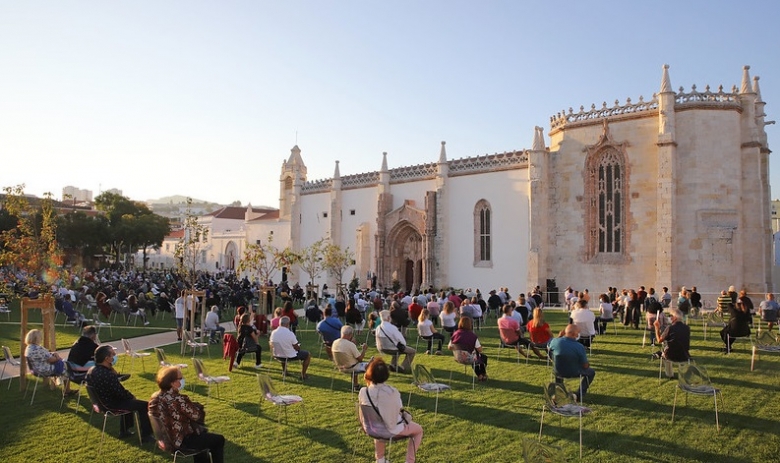
The Monastery of Jesus in Setúbal in Portugal, a gem of Europe’s heritage dating from the 15th century, which had been included on the first list of 7 Most Endangered in 2013, was fully rehabilitated and reopened in 2020. © Municipality of Setúbal
The 7 Most Endangered Programme forms part of a civil society campaign to save Europe’s endangered heritage. In most cases, the listing of an endangered site serves as a catalyst and incentive for the mobilisation of necessary public or private support, including funding. It is run by Europa Nostra in partnership with the European Investment Bank Institute and also has the support of the Creative Europe programme of the European Union.
The Executive Vice-President of Europa Nostra, Guy Clausse, emphasised: “For 10 years, the 7 Most Endangered programme has been instrumental in raising public awareness of the need to join forces to save Europe’s heritage at risk. We wish to thank the European Investment Bank and its Institute as well as all the experts, professionals and volunteers involved for their great contribution to saving Europe’s endangered heritage through this flagship programme”.
The Call for Nominations for the 7 Most Endangered Programme 2024 will open in May 2023.
For more information, please visit the 7 Most Endangered website.
TO FIND OUT MORE
Press releases All sites – English │ Kortrijk Railway Station – Dutch & French │ Partisan Memorial Cemetery – Bosnian │ Tchakvinji Fortress – Georgian │ Sisters’ House Ensemble – German │ Memento Park – Hungarian │ Sveti Stefan – Montenegrin │ Watermills of Bistrica – Serbian
Photos & e-banners │ Video
Europa Nostra
Joana Pinheiro, Communications Coordinator
jp@europanostra.org
M. +31 6 34 36 59 85
Europa Nostra
Antigoni Michael, 7 Most Endangered Programme Coordinator
am@europanostra.org
T. +31 (0) 70 302 40 51
European Investment Bank Institute
Bruno Rossignol
bruno.rossignol@eib.org

